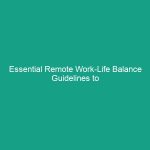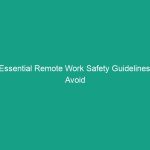Introduction
In the realm of Health, Safety, and Environment (HSE), workplace Safety plays a crucial role in ensuring the well-being of employees, especially in high-risk industries such as construction. One of the significant concerns during the colder months is the risk of cold stress. Cold stress occurs when the body loses heat faster than it can produce it, leading to serious health issues such as hypothermia and frostbite. Understanding Cold Stress Prevention and Protection in Construction is essential for mitigating these risks and safeguarding workers’ health. This article delves into various aspects of cold stress, from regulatory frameworks to practical tips, aimed at enhancing Safety in construction environments.
Understanding Cold Stress
Cold stress encompasses a range of conditions that can affect workers exposed to cold environments. It is vital to recognize the symptoms and Effects of cold stress, which include shivering, confusion, and physical fatigue. If left unaddressed, these symptoms can escalate to severe health risks. In construction, where outdoor work is often required, employees may be at increased risk, especially during winter months or in colder regions.
Types of Cold Stress
There are several forms of cold stress that employees may encounter:
- Hypothermia: This occurs when the body temperature drops below 95°F (35°C), leading to a state where normal bodily functions are impaired.
- Frostbite: This is the freezing of body tissue, commonly affecting fingers, toes, ears, and the nose. It can cause permanent damage if not treated promptly.
- Chilblains: This condition arises from repeated exposure to cold, causing painful inflammation of small blood vessels in the skin.
- Trench Foot: This condition results from prolonged exposure to wet and cold conditions, leading to tissue damage and infection.
Regulatory Frameworks for Cold Stress Management
Adhering to regulatory frameworks is essential for effective cold stress prevention and protection in construction. Various organizations provide guidelines to ensure the safety of workers in cold environments. The Occupational Safety and Health Administration (OSHA) and the National Institute for Occupational Safety and Health (NIOSH) are two key bodies in the United States that outline Standards and recommendations.
osha Guidelines
OSHA does not have a specific standard addressing cold stress; however, it falls under the general duty clause, which requires employers to provide a safe workplace. Employers are encouraged to implement a cold Stress Program that includes:
- Identifying at-risk workers and areas.
- Providing Training on cold stress awareness and symptoms.
- Establishing Procedures for monitoring weather conditions.
- Including cold stress in the overall injury and illness prevention program.
NIOSH Recommendations
NIOSH provides specific recommendations for preventing cold stress, which include:
- Wearing appropriate clothing and layers to retain body heat.
- Implementing work-rest schedules to prevent overexertion.
- Ensuring access to warm-up shelters.
- Conducting regular health checks for employees working in cold conditions.
Best Practices for Cold Stress Prevention in Construction
Implementing Best Practices is critical for ensuring the safety and health of construction workers during cold weather. By adopting proactive measures, employers can significantly reduce the risks associated with cold stress.
Personal Protective Equipment (PPE)
Proper PPE is the first line of defense against cold stress. Workers should be equipped with:
- Insulated Clothing: Layering is key. Use moisture-wicking base layers, insulating middle layers, and windproof outer layers.
- Head Protection: Hats and helmets with thermal linings can help retain heat.
- Gloves and Hand Protection: Insulated gloves that allow for dexterity are essential.
- Footwear: Insulated, waterproof boots with thick soles provide warmth and traction on slippery surfaces.
Worksite Management
Effective management of the worksite can also mitigate cold stress. Consider the following strategies:
- Weather Monitoring: Keep track of local weather forecasts and adjust work schedules accordingly.
- Warm-Up Breaks: Schedule regular breaks in warm areas to allow workers to recover body heat.
- Hydration and Nutrition: Encourage workers to stay hydrated and maintain proper nutrition, as energy levels can impact body temperature regulation.
Training and Awareness
Investing in training for employees is crucial. Workers should be educated about:
- Recognizing the symptoms of cold stress.
- Understanding the importance of reporting symptoms immediately.
- Learning about the buddy system to monitor each other’s well-being.
Case Studies: Successful Cold Stress Management
Real-world applications of cold stress prevention strategies can illustrate their effectiveness. Below are a couple of case studies highlighting successful implementations.
Case Study 1: Construction Company A
Construction Company A, operating in a region with harsh winters, implemented a comprehensive cold stress management program. They provided their workers with insulated gear, established a warm-up schedule, and conducted regular training sessions on cold stress awareness. As a result, they reported a significant decrease in cold-related incidents, demonstrating the effectiveness of proactive measures.
Case Study 2: Infrastructure Project B
In an infrastructure project where workers were exposed to cold, wet conditions, Project B introduced heated tents for breaks and hydration stations equipped with warm beverages. They also employed a system of rotating teams to limit exposure time. This approach not only enhanced worker comfort but also improved overall productivity, showcasing the connection between safety and performance.
Challenges in Cold Stress Prevention
Despite the best efforts, challenges remain in effectively managing cold stress in construction. Understanding these barriers can help organizations devise better strategies.
Employee Compliance
One significant challenge is ensuring employee compliance with safety protocols. Some workers may resist wearing heavy clothing or taking breaks, believing it will hinder their productivity. To combat this, employers should foster a culture of safety where workers understand the importance of following protocols for their health and safety.
Awareness and Education
Another challenge is the lack of awareness and education regarding cold stress symptoms. Many workers may not recognize the early signs of cold stress, leading to severe health consequences. Continuous training and the use of visual aids, such as posters and digital reminders, can help increase awareness.
Weather Variability
Weather conditions can be unpredictable, making it challenging to implement cold stress measures consistently. Employers should have flexible plans that can adapt to changing weather patterns, including real-time weather updates to modify work activities as needed.
Future Trends in Cold Stress Prevention and Protection
As technology and practices evolve, so too does the approach to cold stress prevention. Here are some future trends that may impact cold stress management in construction.
Wearable Technology
The rise of wearable technology is set to revolutionize safety in construction. Wearables can monitor workers’ body temperatures and provide real-time feedback. This technology can alert supervisors if a worker is at risk of cold stress, allowing for timely intervention.
Enhanced Materials
Advancements in materials science are leading to the development of better insulation and weather-resistant clothing. Future PPE may incorporate smart fabrics that adapt to changing temperatures, providing optimal warmth and comfort without hindering mobility.
Data-Driven Approaches
Utilizing data analytics to track and predict cold stress incidents can enhance preventive measures. By analyzing data from previous incidents, construction companies can identify patterns and adjust their safety protocols accordingly, leading to a more proactive approach to cold stress management.
Conclusion
Cold stress is a serious concern in the construction industry, but with the right knowledge and resources, it can be effectively managed. Understanding the risks, implementing Best Practices, and adhering to regulatory frameworks are essential steps in ensuring the safety of workers. Companies that prioritize Cold Stress Prevention and Protection in Construction not only protect their employees but also enhance productivity and morale. As we look to the future, embracing technology and innovative strategies will further advance our efforts in cold stress management. Let us work together to create safer, healthier work environments for all construction workers.


